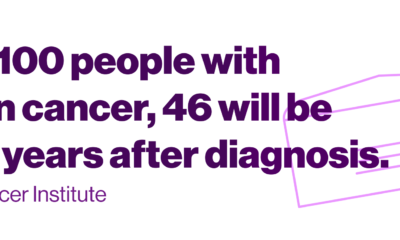Politics
Vision AI: Prevent Fire and Smoke Hazards in the Workplace
Published
8 months agoon
By
Drew Simpson
Fire hazards are a global scourge, indiscriminately wreaking havoc on homes, businesses, and other infrastructures. They can have devastating consequences, including life-threatening injuries, deaths, and severe economic ramifications for individuals and businesses. While smoke is often underestimated as a deadly hazard, it is a leading cause of fatalities in fire incidents as it asphyxiates victims long before flames reach them.
Smoke and fire hazards leave behind a trail of devastation in countless sectors, such as refineries, construction sites, manufacturing units, offices, and government facilities. These perils not only claim numerous lives and pose more profound and irreplaceable health risks but also inflict billions of dollars in annual damages in terms of damage repairs, legal liabilities, insurance coverage, and operational downtime.
The devastating implications of fire and smoke hazards drive businesses worldwide to adopt robust fire and smoke detection systems. Artificial intelligence (AI), specifically computer vision, is emerging as a game-changing solution that can provide real-time, efficient, and automated monitoring to ensure fire safety in the workplace.
Alarming statistics on the impact of fire and smoke incidents.
- According to the National Fire Protection Association (NFPA), there were an estimated 1.3 million fires in the United States in 2021. These fires caused an estimated $22.2 billion in property damage and 3,500 deaths.
- The main contributors to fire hazards at the workplace include electrical failure, improper equipment usage, smoking, flammable materials, hot objects, etc.
- Smoke inhalation was the leading cause of death in fires in 2021, accounting for 78% of fire-related deaths.
While smoke and fire hazards are economically dangerous, life-threatening, and have long-lasting effects — their impact can be substantially reduced if detected in early phases.
Detecting Smoke and Fire Hazards Early
Organizations need to adopt proactive hazard prevention tools to detect fire and smoke hazards in their early stages. One way to become proactive is to adopt workplace fire and smoke detection devices. By deploying these solutions at the workplace, organizations can identify hazard triggers (such as smoke or fire) or warnings (such as missing fire extinguishers) early and take prompt actions before those things turn fatal.
What’s the Role of AI in Smoke and Fire Detection?
Artificial Intelligence (AI) is a transforming technology that has completely revolutionized workplace safety. One such application of AI that is becoming increasingly popular in commercial, industrial, and public spaces is fire and smoke detection. AI-powered fire and smoke detection solutions use intelligent algorithms to analyze the visual and thermal data captured by sensors and cameras, quickly identifying and alerting fire and smoke-related risks.
Here are a few points highlighting the role of AI in fire and smoke detection:
- Early detection: AI-based fire and smoke detection systems can detect fire/smoke at early stages. These systems continuously monitor the surrounding environment with the help of sensors and ML-powered algorithms. With early detection, workplace managers can take prompt actions to reduce the spread of fire/smoke or plan for a safe evacuation.
- Intelligent Alerting: AI systems use machine learning algorithms to differentiate between actual and false alarms. By reducing the number of false alarms and providing precise information to responders, businesses can ensure a quicker response that saves lives and reduces property damage.
- Remote Monitoring: AI smoke and fire detection systems provide real-time access to alerts, notifications, and updates. This allows emergency services to be alerted immediately and people to be evacuated quickly, increasing the chances of a successful rescue operation.
- Warning Signs: AI-based smoke and fire detection systems look for changes in the color and motion of the video footage to ascertain if there is any hazard risk or not. The system triggers alerts upon identification so preventive actions can be taken quickly.
How do Computer Vision-Powered Solutions Detect Smoke and Fire?

Fire and smoke detection happens with the help of cameras powered by computer vision (Vision AI) solutions. Vision AI solutions analyze real-time footage of various cameras installed within the premises and identify hazard threats early. It does that with the help of trained models that have been trained with thousands of images in various lighting and environmental conditions and are capable of accurately identifying even the slightest fire post-training and testing.
The system identifies potential threats, such as smoke or flames, by comparing the live footage with the patterns and characteristics learned during training. Once a fire or smoke is detected, the system can trigger alarms and alerts — or activate fire suppression systems, providing early warning and aiding in effective firefighting measures.
The Science Behind Vision-AI Smoke and Fire Detection Models
Having learned how a Vision-AI-based fire and smoke detection solution works, it is essential to understand the science behind its detection process.
Visual smoke and fire detection models commonly use a technique that analyzes fire’s color and fluctuation characteristics. The algorithm first detects motion in a video by comparing frames. The algorithm then extracts fire-colored pixels from these regions. It does this by identifying pixels with a color characteristic of fire. For example, fire-colored pixels might be red, orange, or yellow.
Next, the algorithm applies wavelet transform to the extracted fire-colored pixels. This is done to identify the frequency components that are characteristic of fire. Lastly, the rate of fire increment in a region is calculated to determine whether the fire is controlled or hazardous. If the fire is detected as dangerous, the detector sends a signal to the control panel, triggering the alarm and alerting the building occupants.
Conclusion
Preventing smoke and fire hazards in the workplace is paramount to ensuring the safety of the workforce and mitigating property damages. Early detection of these hazards is key to preventing their spread, and Vision AI-powered detection systems are proving to be a valuable tool in this regard.
With their increasing adoption across industries, smoke and fire detection models quickly become a benchmark for safe workplaces. Despite their massive capabilities in automation, image processing, real-time monitoring, and predictive analytics, such models can have some challenges associated with their accuracy and scalability. However, adopting such solutions should be fine if the model is well-trained on a vast dataset under different lighting and environmental conditions.
Featured Image and Inner Image Credits: Provided by the Author; Thank you!
You may like
-


The best way to prevent this deadly cancer is to remove multiple organs. And I’m about to do it.
-


Sony AI proposes new solution to address computer vision bias against yellow skin
-


The Download: Europe vs Chinese EVs, and making AI vision less biased
-


These new tools could make AI vision systems less biased
-


John Mattera’s Vision for a Global Private Exchange to Transform the Industry
-


How Does Technology Improve Workplace Safety?
Politics
Fintech Kennek raises $12.5M seed round to digitize lending
Published
7 months agoon
10/11/2023By
Drew Simpson
London-based fintech startup Kennek has raised $12.5 million in seed funding to expand its lending operating system.
According to an Oct. 10 tech.eu report, the round was led by HV Capital and included participation from Dutch Founders Fund, AlbionVC, FFVC, Plug & Play Ventures, and Syndicate One. Kennek offers software-as-a-service tools to help non-bank lenders streamline their operations using open banking, open finance, and payments.
The platform aims to automate time-consuming manual tasks and consolidate fragmented data to simplify lending. Xavier De Pauw, founder of Kennek said:
“Until kennek, lenders had to devote countless hours to menial operational tasks and deal with jumbled and hard-coded data – which makes every other part of lending a headache. As former lenders ourselves, we lived and breathed these frustrations, and built kennek to make them a thing of the past.”
The company said the latest funding round was oversubscribed and closed quickly despite the challenging fundraising environment. The new capital will be used to expand Kennek’s engineering team and strengthen its market position in the UK while exploring expansion into other European markets. Barbod Namini, Partner at lead investor HV Capital, commented on the investment:
“Kennek has developed an ambitious and genuinely unique proposition which we think can be the foundation of the entire alternative lending space. […] It is a complicated market and a solution that brings together all information and stakeholders onto a single platform is highly compelling for both lenders & the ecosystem as a whole.”
The fintech lending space has grown rapidly in recent years, but many lenders still rely on legacy systems and manual processes that limit efficiency and scalability. Kennek aims to leverage open banking and data integration to provide lenders with a more streamlined, automated lending experience.
The seed funding will allow the London-based startup to continue developing its platform and expanding its team to meet demand from non-bank lenders looking to digitize operations. Kennek’s focus on the UK and Europe also comes amid rising adoption of open banking and open finance in the regions.
Featured Image Credit: Photo from Kennek.io; Thank you!
Radek Zielinski
Radek Zielinski is an experienced technology and financial journalist with a passion for cybersecurity and futurology.
Politics
Fortune 500’s race for generative AI breakthroughs
Published
7 months agoon
10/11/2023By
Drew Simpson
As excitement around generative AI grows, Fortune 500 companies, including Goldman Sachs, are carefully examining the possible applications of this technology. A recent survey of U.S. executives indicated that 60% believe generative AI will substantially impact their businesses in the long term. However, they anticipate a one to two-year timeframe before implementing their initial solutions. This optimism stems from the potential of generative AI to revolutionize various aspects of businesses, from enhancing customer experiences to optimizing internal processes. In the short term, companies will likely focus on pilot projects and experimentation, gradually integrating generative AI into their operations as they witness its positive influence on efficiency and profitability.
Goldman Sachs’ Cautious Approach to Implementing Generative AI
In a recent interview, Goldman Sachs CIO Marco Argenti revealed that the firm has not yet implemented any generative AI use cases. Instead, the company focuses on experimentation and setting high standards before adopting the technology. Argenti recognized the desire for outcomes in areas like developer and operational efficiency but emphasized ensuring precision before putting experimental AI use cases into production.
According to Argenti, striking the right balance between driving innovation and maintaining accuracy is crucial for successfully integrating generative AI within the firm. Goldman Sachs intends to continue exploring this emerging technology’s potential benefits and applications while diligently assessing risks to ensure it meets the company’s stringent quality standards.
One possible application for Goldman Sachs is in software development, where the company has observed a 20-40% productivity increase during its trials. The goal is for 1,000 developers to utilize generative AI tools by year’s end. However, Argenti emphasized that a well-defined expectation of return on investment is necessary before fully integrating generative AI into production.
To achieve this, the company plans to implement a systematic and strategic approach to adopting generative AI, ensuring that it complements and enhances the skills of its developers. Additionally, Goldman Sachs intends to evaluate the long-term impact of generative AI on their software development processes and the overall quality of the applications being developed.
Goldman Sachs’ approach to AI implementation goes beyond merely executing models. The firm has created a platform encompassing technical, legal, and compliance assessments to filter out improper content and keep track of all interactions. This comprehensive system ensures seamless integration of artificial intelligence in operations while adhering to regulatory standards and maintaining client confidentiality. Moreover, the platform continuously improves and adapts its algorithms, allowing Goldman Sachs to stay at the forefront of technology and offer its clients the most efficient and secure services.
Featured Image Credit: Photo by Google DeepMind; Pexels; Thank you!
Deanna Ritchie
Managing Editor at ReadWrite
Deanna is the Managing Editor at ReadWrite. Previously she worked as the Editor in Chief for Startup Grind and has over 20+ years of experience in content management and content development.
Politics
UK seizes web3 opportunity simplifying crypto regulations
Published
7 months agoon
10/10/2023By
Drew Simpson
As Web3 companies increasingly consider leaving the United States due to regulatory ambiguity, the United Kingdom must simplify its cryptocurrency regulations to attract these businesses. The conservative think tank Policy Exchange recently released a report detailing ten suggestions for improving Web3 regulation in the country. Among the recommendations are reducing liability for token holders in decentralized autonomous organizations (DAOs) and encouraging the Financial Conduct Authority (FCA) to adopt alternative Know Your Customer (KYC) methodologies, such as digital identities and blockchain analytics tools. These suggestions aim to position the UK as a hub for Web3 innovation and attract blockchain-based businesses looking for a more conducive regulatory environment.
Streamlining Cryptocurrency Regulations for Innovation
To make it easier for emerging Web3 companies to navigate existing legal frameworks and contribute to the UK’s digital economy growth, the government must streamline cryptocurrency regulations and adopt forward-looking approaches. By making the regulatory landscape clear and straightforward, the UK can create an environment that fosters innovation, growth, and competitiveness in the global fintech industry.
The Policy Exchange report also recommends not weakening self-hosted wallets or treating proof-of-stake (PoS) services as financial services. This approach aims to protect the fundamental principles of decentralization and user autonomy while strongly emphasizing security and regulatory compliance. By doing so, the UK can nurture an environment that encourages innovation and the continued growth of blockchain technology.
Despite recent strict measures by UK authorities, such as His Majesty’s Treasury and the FCA, toward the digital assets sector, the proposed changes in the Policy Exchange report strive to make the UK a more attractive location for Web3 enterprises. By adopting these suggestions, the UK can demonstrate its commitment to fostering innovation in the rapidly evolving blockchain and cryptocurrency industries while ensuring a robust and transparent regulatory environment.
The ongoing uncertainty surrounding cryptocurrency regulations in various countries has prompted Web3 companies to explore alternative jurisdictions with more precise legal frameworks. As the United States grapples with regulatory ambiguity, the United Kingdom can position itself as a hub for Web3 innovation by simplifying and streamlining its cryptocurrency regulations.
Featured Image Credit: Photo by Jonathan Borba; Pexels; Thank you!
Deanna Ritchie
Managing Editor at ReadWrite
Deanna is the Managing Editor at ReadWrite. Previously she worked as the Editor in Chief for Startup Grind and has over 20+ years of experience in content management and content development.
